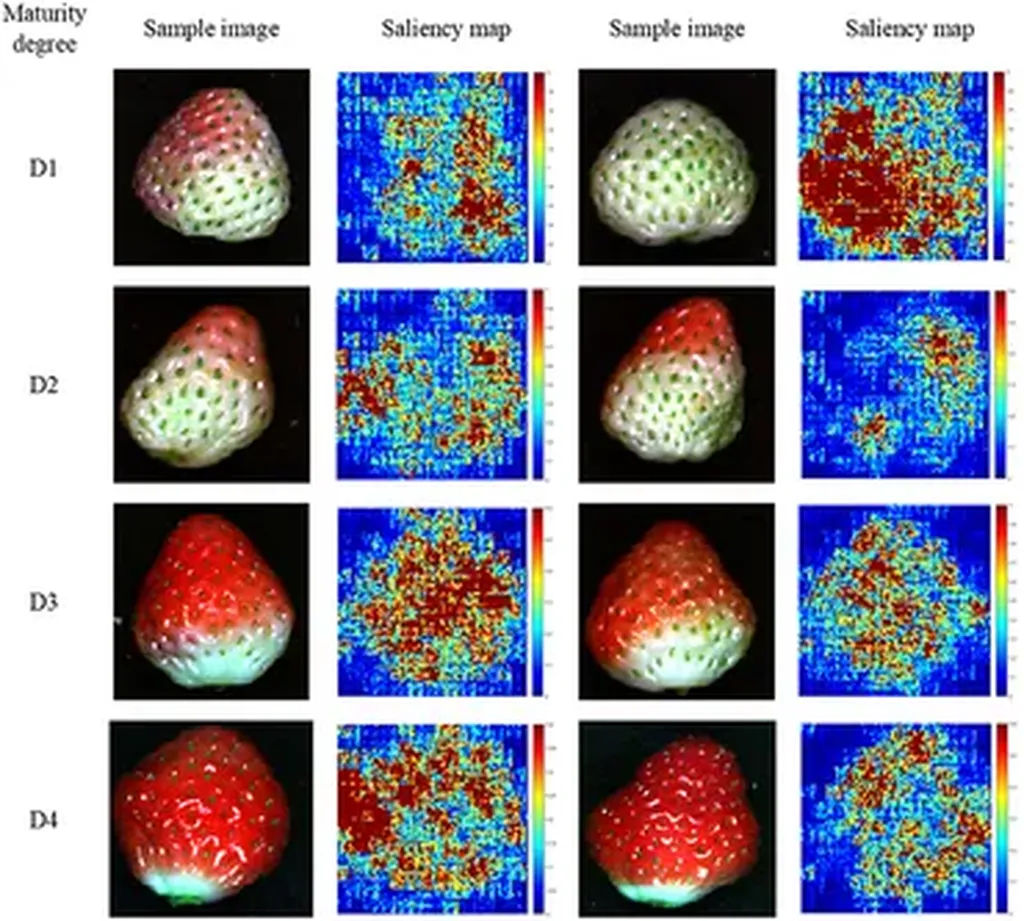In the heart of China’s Guangxi region, a groundbreaking study led by Dr. Chu Jiahui from Nanning Normal University is revolutionizing the way we assess fruit quality. The research, published in *Guoshu xuebao* (translated as *Journal of Fruit Science*), introduces a novel method for determining the soluble solids content (SSC) in Dangshansuli pears using hyperspectral imaging (HSI) and advanced modeling techniques. This innovation promises to streamline quality control processes and enhance market efficiency, offering significant commercial impacts for the agricultural sector.
Dangshansuli pears, renowned for their crisp texture and sweet flavor, are a popular variety in China. However, traditional methods for measuring SSC—an essential indicator of fruit quality—are time-consuming and destructive, making them impractical for large-scale applications. “The conventional methods rely on chemical reagents and sample destruction, which are not suitable for rapid, non-destructive analysis,” explains Dr. Chu. “Our study addresses this challenge by integrating hyperspectral imaging with advanced modeling techniques, providing a faster and more efficient solution.”
The research team employed the Headwall Micro-Hyperspec VNIR A system to capture hyperspectral images of 187 pear samples. By using a portable digital refractometer, they established reference SSC values, which ranged from 9.57 to 13.58 °Brix. The dataset was then partitioned into training and test sets using the sample set portioning based on the joint x-y distance (SPXY) algorithm, ensuring a reliable and balanced distribution.
One of the key innovations in this study is the use of the Crested Porcupine Optimizer (CPO) algorithm to optimize the Partial Least Squares Regression (PLSR) model. This approach dynamically adjusts the number of principal components, reducing the risks of underfitting and overfitting. “The CPO algorithm significantly enhances the performance of the PLSR model, improving prediction accuracy and stability,” says Dr. Chu. “This optimization process is crucial for developing robust and reliable models for quality assessment.”
The study also employed three feature selection methods—Sequentially Projected Algorithm (SPA), Competitive Adaptive Reweighted Sampling (CARS), and Improved Modified Uninformative Variable Elimination (imUVE)—to reduce spectral redundancy and enhance model performance. The SPA method, in particular, excelled in extracting feature wavelengths, minimizing computational load while preserving chemically significant regions.
The results were impressive. The SPA-CPO-PLSR model achieved an R2P of 0.5512 and an RMSEP of 0.3067 °Brix, outperforming traditional PLSR and other feature-based models. This method enabled rapid analysis, with each sample processed in less than three seconds, making it highly suitable for commercial applications.
The implications of this research are far-reaching. By providing a non-destructive and efficient method for SSC determination, this technology can enhance quality control processes, reduce waste, and improve market efficiency. “This method not only improves prediction accuracy but also automates principal component selection, making it a valuable tool for the agricultural sector,” says Dr. Chu.
Looking ahead, the research team plans to extend this framework to multi-parameter fruit quality analysis, including acidity and vitamin content. They also aim to validate its applicability across different fruit varieties and agricultural products. “Our goal is to develop a comprehensive and versatile tool for quality assessment that can be widely adopted in the industry,” says Dr. Chu.
As the agricultural sector continues to evolve, innovations like this are crucial for meeting market demands and ensuring product quality. Dr. Chu’s research represents a significant step forward in this direction, offering a glimpse into the future of precision agriculture and intelligent quality inspection. With the publication of this study in *Guoshu xuebao*, the stage is set for broader adoption and further advancements in the field.

